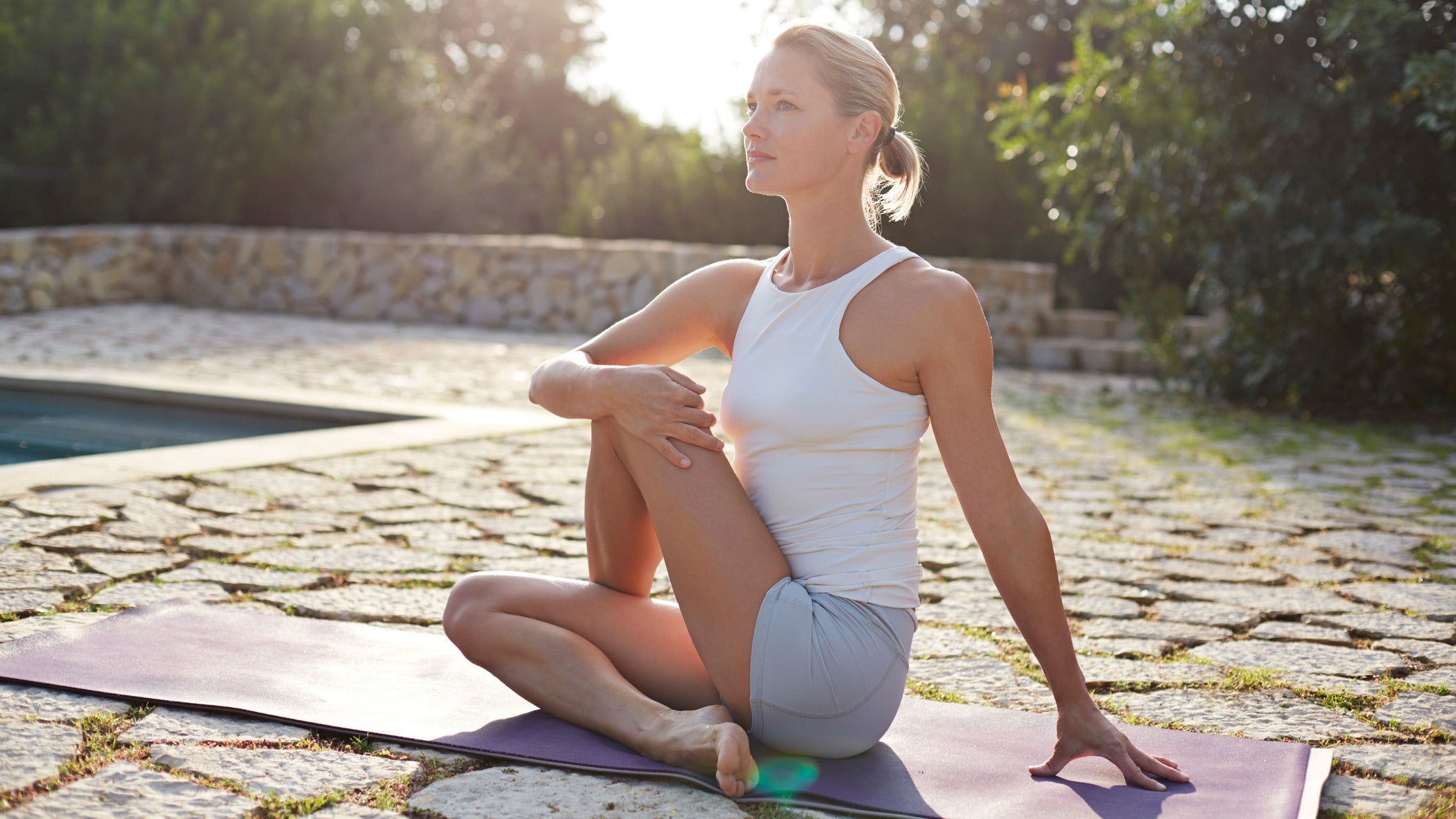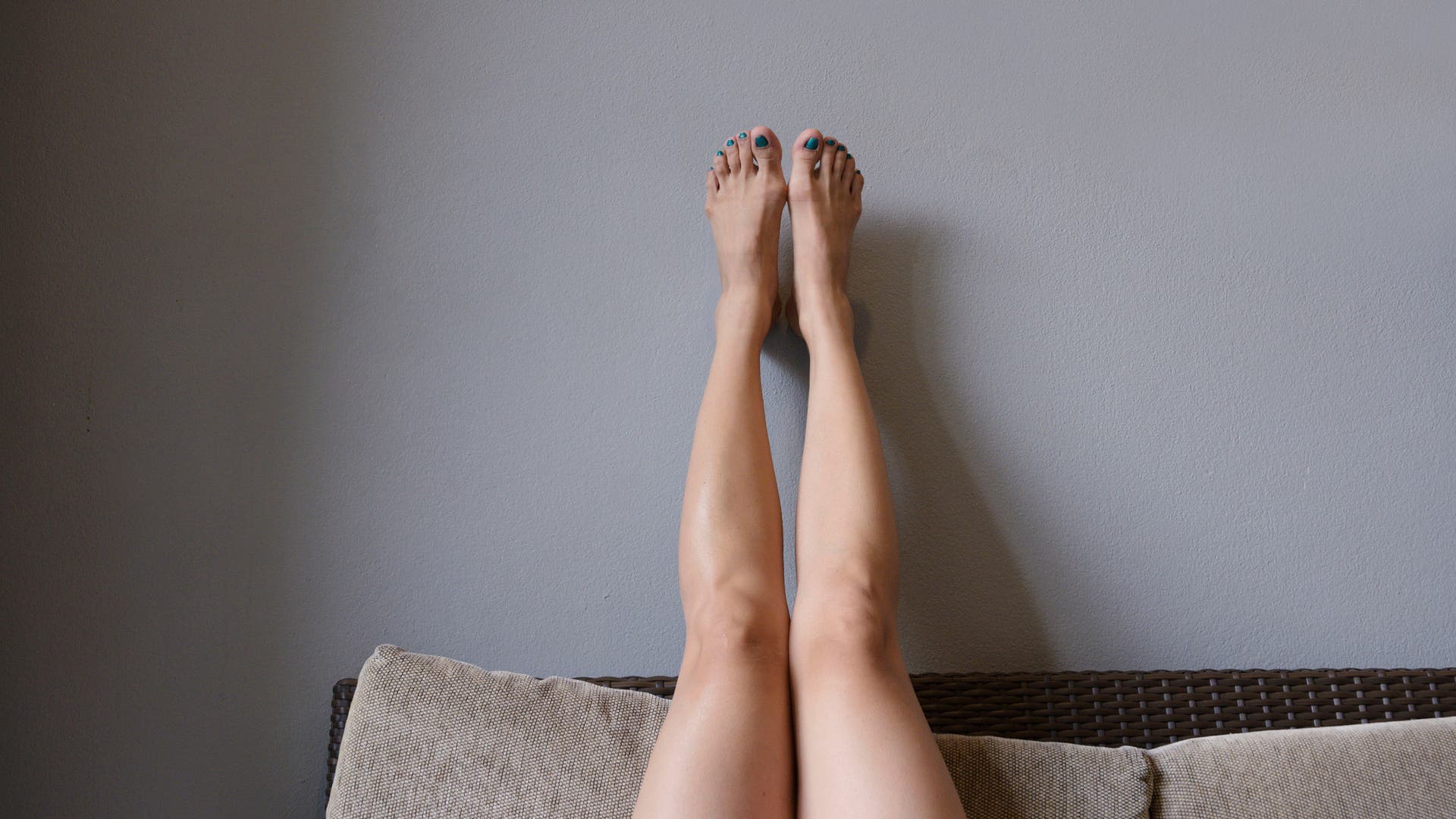Now Is the Best Time to Add Yoga to Your Training Plan

Now is the best time to add yoga to your workouts. (Photo: Getty Images)
According to Peloton Yoga instructor Chelsea Jackson Roberts, yoga is an integrative practice that can ground us in a way that connects the mind and body.
“Yoga can be used as both a tool to move through the additional stress we are experiencing during this time, and also a framework for how to process a huge shift in the world and communicate along the way,” Jackson Roberts said of doing yoga during the pandemic.
“In yoga, we focus on the body, breath, and movement—and ultimately even our actions in the world. Practices found in yoga are specifically used for the sake of getting grounded and clear, and moving with integrity and compassion,” she added.
Of course, people have long been turning to yoga to control their stress levels. A 2018 study found that depression, anxiety, and stress decreased significantly in women after 12 sessions of regular hatha yoga, while a 2017 study determined that officer workers who took yoga classes at their gym for two-four months experienced significant reductions in stress and all psychological health measures.
Jackson Roberts explained, “Because yoga teaches us that everything is connected, yoga supports our bodies in ways that can even reduce the impact stress has on our physical body. It also provides opportunities for us to slow down and listen.”
“When we breathe and move in deliberate ways, we are allowing time for reflection and even physical release through the yoga postures,” she continued.
The passionate yogi also maintains that yoga is key for boosting immunity, as the breathing exercises taught through yoga offer techniques to calm the nervous system, which directly impacts the immune system.
Similarly, there are many yoga techniques that can strengthen the nervous system and “flush” our lymphatic systems to get rid of waste and toxins.
“For intermediate and advanced practitioners, I always recommend shoulder stand and plow postures because these are the ultimate poses to flush the lymphatic system,” Jackson Roberts said. “As the seasons change, I recommend alternate nostril breathing which is a technique used to balance the nasal passages and ultimately strengthens the immune system too.”
To “wring out” both the nervous and immune systems, Jackson Roberts likes to incorporate spinal twists into her classes.
“You can do a spinal twist seated in a chair, on the floor, and even lying on your spine,” she instructed. “Essentially, you are moving the upper half of your body in one direction, while the lower half moves in the other. I like to imagine filling a sponge with liquid. The liquid represents stress and toxins. When we practice spinal twists, we are strengthening our systems through the movement and through the breath.”
Another issue that arose for many people as they grappled with the effects of the pandemic was sleep disruption. Jackson Roberts pointed to research at Harvard University which illustrates yoga’s ability to help the body rest soundly.
“Rest is key to strengthening the immune system,” she said. “When we practice techniques found in yoga and meditation, we are training our bodies to respond in reflective ways to the factors that cause stress.”
Jackson Roberts has been a student of Yoga Nidra, a relaxing technique that directly impacts sleep and rest, for almost 10 years and she is “confident” that exploring the ethos will help people struggling to switch off. Tellingly, the Peloton app now offers guided sleep meditations too, as sleep becomes an increasingly important topic of conversation.
So if your bedtime routine is still topsy turvy thanks to months of lockdown, Jackson Roberts points to a simple pose which can immediately help you wind down.

“I always recommend a restorative yoga posture called ‘legs up the wall,’” she said. “This technique can be done by lying on your spine and moving your bottom all the way to the angle where the floor meets the wall. Essentially, your body is in an L shape and I encourage students to take five to 10 deep sighs in this posture. If the bottom to the wall movement is too intense, you can try lying on your spine and placing your legs in a chair. This is a great way to bring the heart rate down and focus on slowing down the breath as well.”